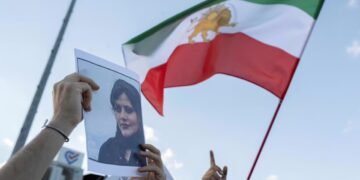Mark Carney, former governor of the Bank of Canada and the Bank of England, officially became Canada’s 24th prime minister on Friday, following the resignation of Justin Trudeau. The swearing-in ceremony took place at Rideau Hall in Ottawa, where Carney revealed a significantly downsized cabinet — the smallest in recent years — with only 23 ministers compared to Trudeau’s 39-member cabinet.
Carney’s cabinet consists of 13 men and 11 women, with some familiar faces from Trudeau’s administration retaining key roles, while others were shuffled or removed entirely. The smaller, more focused team reflects Carney’s promise to streamline the government and tackle pressing economic and trade challenges head-on.
Key Cabinet Appointments:
- Mark Carney – Prime Minister
- François-Philippe Champagne – Minister of Finance
- Mélanie Joly – Minister of Foreign Affairs and International Development
- Bill Blair – Minister of National Defence
- David McGuinty – Minister of Public Safety and Emergency Preparedness
- Dominic LeBlanc – Minister of International Trade, Intergovernmental Affairs, and President of the King’s Privy Council
- Chrystia Freeland – Minister of Transport and Internal Trade
- Anita Anand – Minister of Innovation, Science, and Industry
- Rachel Bendayan – Minister of Immigration, Refugees, and Citizenship
- Kody Blois – Minister of Agriculture and Rural Development
- Patty Hajdu – Minister of Indigenous Services
- Ginette Petitpas-Taylor – President of the Treasury Board
- Arielle Kayabaga – Government House Leader and Minister of Democratic Institutions
- Nathaniel Erskine-Smith – Minister of Housing, Infrastructure, and Communities
- Jonathan Wilkinson – Minister of Energy and Natural Resources
- Ali Ehsassi – Minister of Government Transformation, Public Services, and Procurement
- Élisabeth Brière – Minister of Veterans Affairs and Minister Responsible for the Canada Revenue Agency
- Steven Guilbeault – Minister of Canadian Culture and Identity, Parks Canada, and Quebec Lieutenant
- Terry Duguid – Minister of Environment and Climate Change
- Joanne Thompson – Minister of Fisheries, Oceans, and the Canadian Coast Guard
- Rechie Valdez – Chief Government Whip
- Kamal Khera – Minister of Health
- Steven MacKinnon – Minister of Jobs and Families
Who’s Out?
Several high-profile ministers from Trudeau’s government have been excluded, including:
- Mark Holland, former Minister of Health
- Jean-Yves Duclos, former Minister of Public Services and Procurement
- Mary Ng, former Minister of International Trade
- Marc Miller, former Minister of Immigration
Carney’s decision to cut several portfolios, such as tourism, gender equality, youth, seniors, and sports, reflects his strategy to focus on key economic and international issues.
A Bold Start with a Focus on Trade and Unity
Carney, who is not currently an elected Member of Parliament, is expected to run for a seat in the House of Commons soon. Speculation is also rising that he might call a snap election to secure a strong mandate for his government.
In his first statement as prime minister, Carney emphasized his administration’s commitment to economic reform, climate action, and restoring Canada’s international reputation. He also vowed to maintain Canada’s counter-tariffs against the U.S., following President Donald Trump’s aggressive trade policies.
“We are here to deliver results and rebuild trust with Canadians,” Carney said. “Our government will be focused on strengthening the economy, protecting Canadian jobs, and defending our sovereignty on the global stage.”
A Shift Towards a More Technocratic Government
Carney’s cabinet reflects his background as an economist and global financial leader. With experienced figures like François-Philippe Champagne leading finance and Mélanie Joly handling foreign affairs, Carney aims to foster economic growth, address climate change, and diversify trade partnerships with more “reliable” allies.
While some view Carney’s cabinet as “practical and efficient,” critics argue that eliminating portfolios related to gender equality and youth sends a negative message.
As Carney prepares to face challenges such as rising inflation, strained U.S.-Canada relations, and domestic political divisions, Canadians are watching closely to see whether this leaner government can deliver on its promises.










































